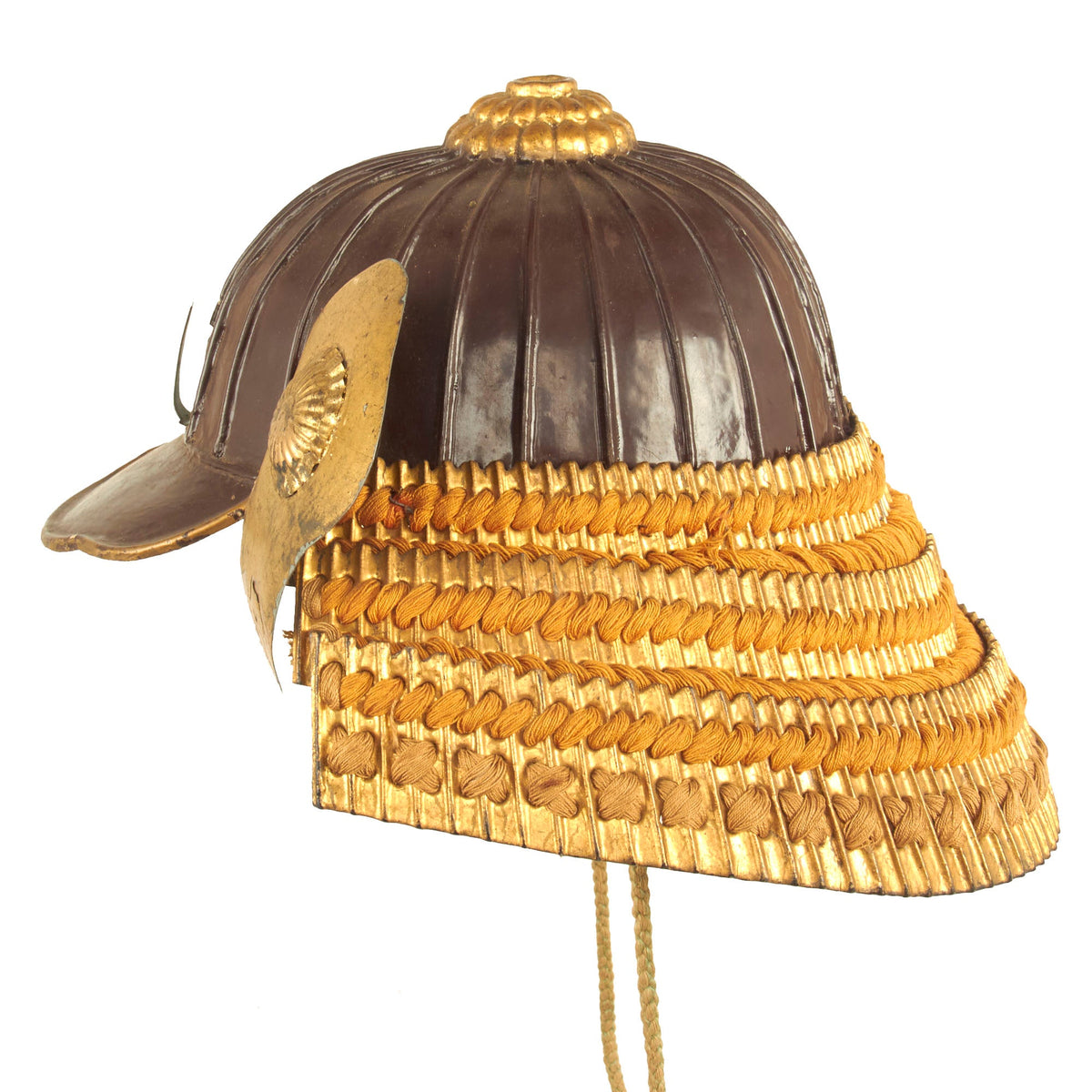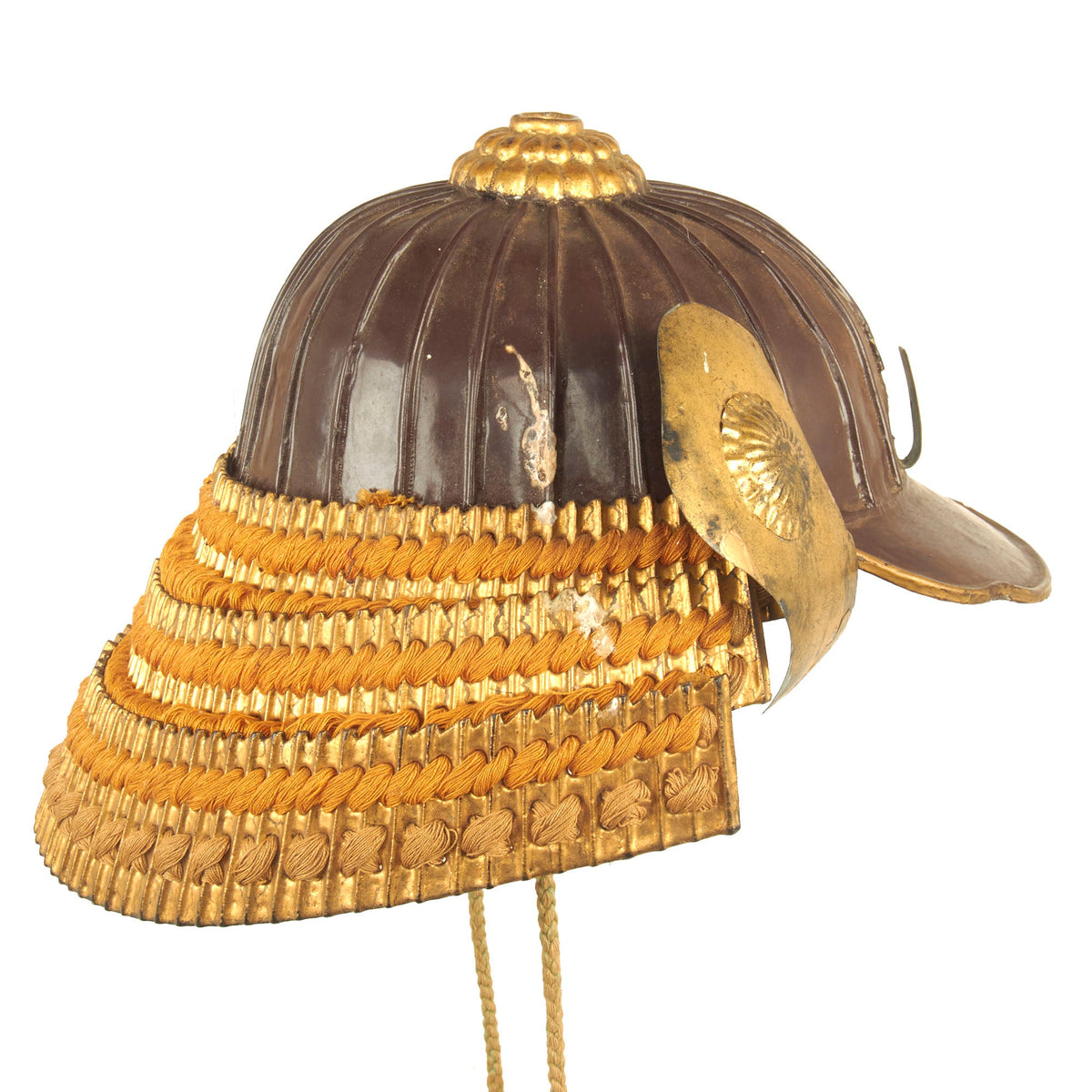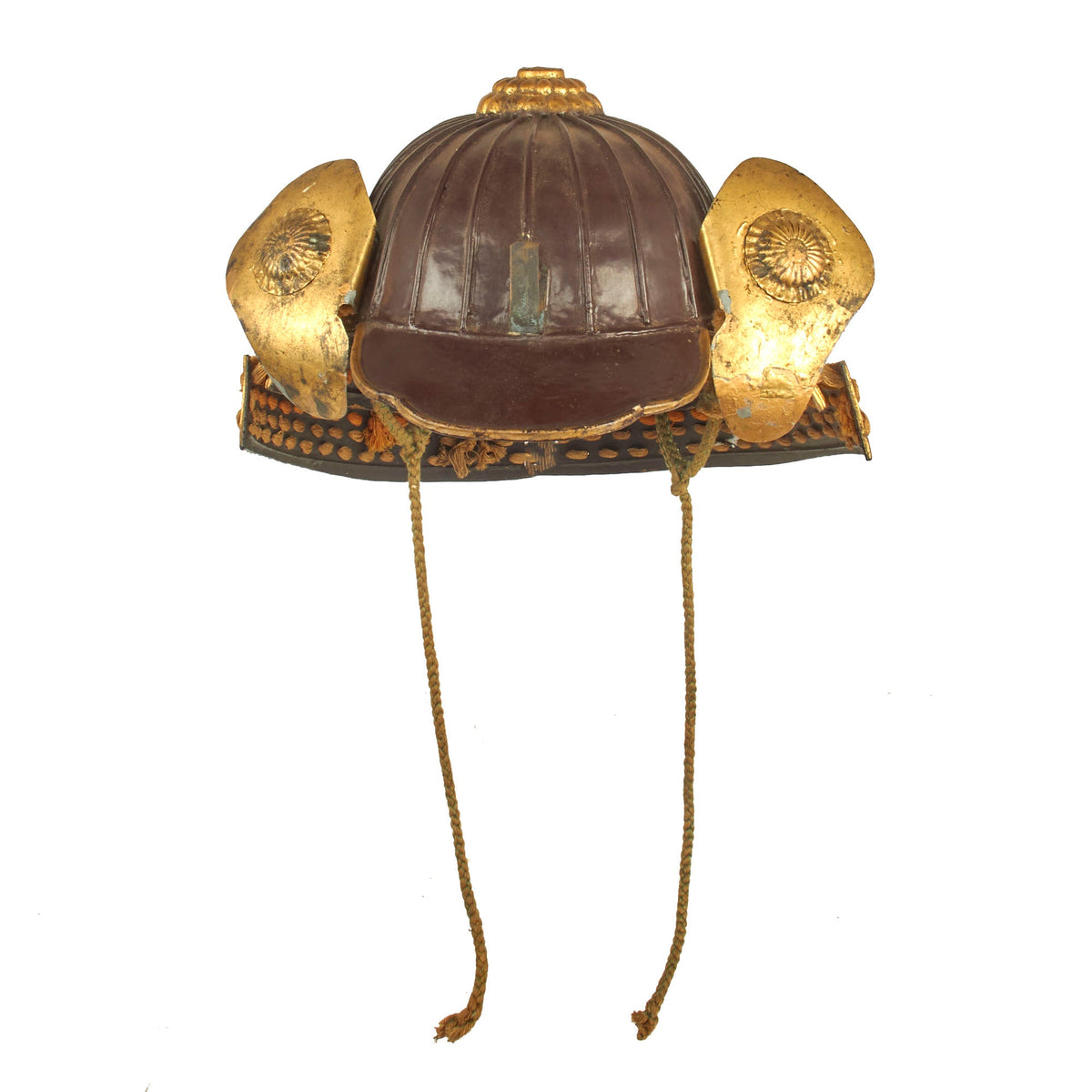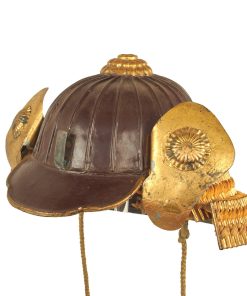Original 19th Century Japanese Samurai Edo Period Child Sized Ornate Enameled Kabuto Helmet Original Items
$ 595,00 $ 178,50
Original Item: One of a Kind. A Kabuto (兜, 冑) is a type of helmet first used by ancient Japanese warriors which, in later periods, became an important part of the traditional Japanese armor worn by the samurai class and their retainers in feudal Japan. In the Japanese language, the word kabuto is an appellative, not a type description, and can refer to any combat helmet. The design used for samurai helmets evolved over the centuries, and this example is typical of the design seen during the later part of the Edo period (江戸時代, Edo jidai) or Tokugawa period (徳川時代, Tokugawa jidai) of Japanese history. This is the period between 1603 and 1867, when Japan was under the rule of the Tokugawa shogunate and the country’s 300 regional daimyo.
It is however relatively small and definitely quite lightweight, with only the Fukigaeshi “wings” and some other components being magnetic. The other parts look to be laquered pressed wood, meaning this was more intended for display than for actual use, probably intended for the child of someone of some importance. It also may have been used during “Children’s Day”, when samurai armor would be displayed, and often scaled down versions were used, as they were easier to transport and set up.
Regardless, it definitely shows very high quality construction, and the rear Shikoro, the suspended neck guard composed of multiple overlapping lames, is in wonderful condition and properly laced. All of the other components are completely correct in construction.
A very interesting scaled down Japanese Samurai helmet, ready to research and display!
Fast Shipping with Professional Packaging
Thanks to our longstanding association with UPS FedEx DHL, and other major international carriers, we are able to provide a range of shipping options. Our warehouse staff is expertly trained and will wrap your products according to our exact and precise specifications. Prior to shipping, your goods will be thoroughly examined and securely secured. We ship to thousands clients each day across multiple countries. This shows how we're dedicated to be the largest retailer on the internet. Warehouses and distribution centres can be located throughout Europe as well as the USA.
Note: Orders with more than one item will be assigned a processing date depending on the item.
Before shipping before shipping, we'll conduct a thorough inspection of the items you have ordered. Today, the majority of orders will be delivered within 48 hours. The delivery time will be between 3-7 days.
Returns
The stock is dynamic and we cannot completely manage it because multiple stakeholders are involved, including our factory and warehouse. So the actual stock may alter at any time. It's possible that you may not receive your order once the order has been made.
Our policy is valid for a period of 30 days. If you don't receive the product within 30 days, we are not able to issue a refund or an exchange.
You can only return an item if it is unused and in the same state as the day you received it. You must have the item in its original packaging.
Related products
Uncategorized
Uncategorized
Uncategorized
Armoured Fighting Vehicles of the World: AFVs of World War One (Hardcover Book) New Made Items
Uncategorized
Uncategorized
Uncategorized
Uncategorized
Uncategorized
Uncategorized
Uncategorized
Uncategorized
Uncategorized
Uncategorized
Angolan Rebel 1970s era 60mm Inert Display Mortar from Angolan Civil War Original Items
Uncategorized
Uncategorized
Uncategorized
Uncategorized
Band of Brothers ORIGINAL GERMAN WWII Le. F.H. 18 10.5cm ARTILLERY PIECE Original Items












































































